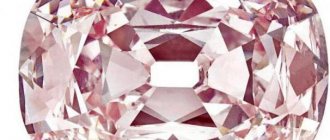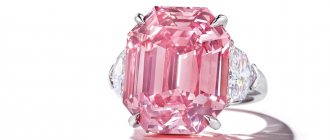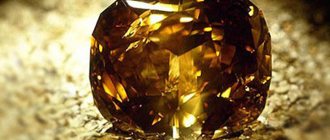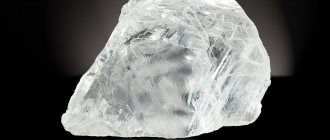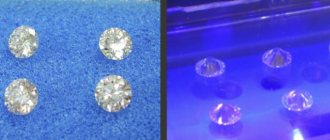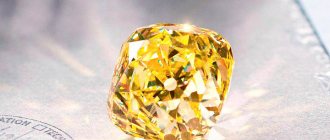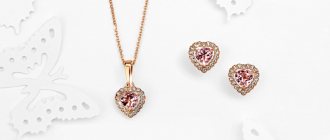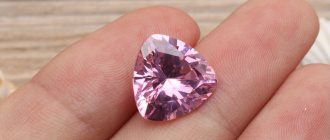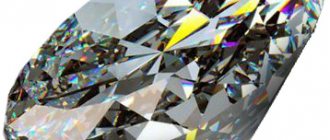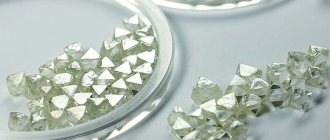The Republic of Sakha is rich in its diamond deposits. It is here that 99% of Russia's diamonds are mined, but the recent discovery amazed many experts. History has never seen such a large diamond mined in Russia.
Diamonds are the oldest treasure in the world. The formation of diamonds is associated with the origin of our planet. After all, these stones are formed deep in the bowels of the Earth over millions of years. Strong pressure and other geomorphic conditions are required for diamond to form. Diamonds travel a surprisingly long way before ending up in jewelry.
Rating of the largest diamonds found in the world
There are a number of the largest diamonds in the world that are very expensive. This rating includes the following copies:
- Cullinan. This is the largest diamond, weighing more than 530 carats. It was found in southern Africa. This happened in 1905. The crystal has a transparent structure. This mineral serves as decoration for the royal scepter of Great Britain. Before cutting, the weight of the gem was 3106 carats. The name of the Cullinan diamond was given in honor of the owner of the mine.
- Golden Jubilee. This stone weighs 755.5 carats. The largest diamond in the world was named this way because it was given to the King of Thailand as an anniversary gift. This mineral was mined in southern Africa. After processing it received a yellowish color. The appearance of the crystal is considered a unique feature. As a result of processing, the mineral received the shape of a rose.
- Victory Diamond. This one of the largest diamonds in the world weighs 770 carats. It was found in western Africa. This happened in 1945. The mineral is also called the “Woye River” because it was mined in its valley. It is characterized by an original diamond-shaped shape. The diamond is highly transparent. This large stone does not include foreign impurities.
- Star of the Millennium. This beautiful 777 carat diamond was found in Africa. This happened in 1990. It is considered one of the largest diamonds in the world. The cutting process took 3 years. As a result, the gem acquired an amazing pear-shaped shape.
- Great Mogul. This large diamond was found in India in the mid-seventeenth century. However, the people who found this stone were more struck by its unusual blue hue. As a result of processing, the mineral was given the shape of a rose.
- Star of Sierra Leone. This crystal is considered one of the largest diamonds in the world. At first it weighed 969.8 carats. The mineral gained popularity due to its amazing purity. A jeweler from New York bought the gem for $2.5 million. Already at home, he found a flaw in the structure of the stone and cut the gem into 17 parts. The largest diamond that came out was called the “Star of Sierra Leone.”
- Red Cross. This large diamond was found in southern Africa. This happened in 1901. A distinctive feature of the diamond was its unusual color. It was characterized by a yellowish color. The structure of the gem showed a Maltese cross, which is characterized by 8 sides. How many carats does this mineral weigh? Before cutting, it weighed 375 carats, and after processing - 205.07. The mineral can accumulate light.
“Made with us” and on Yandex.Zen
An artificially grown crystal is the future and its main purpose is to be used for technical purposes in the field of high technology.
Diamond manufacturing is just a special case of using a gem-quality diamond. We have a slogan - if nothing else can be made from a diamond, make a diamond. Naturally, at present, over such a long period of existence of cutting technologies, a fairly effective method has been developed for assessing the commercial value of diamonds depending on its shape, size, color and quality. Therefore, all companies involved in the cultivation, first of all, evaluate the cost of their products in the jewelry direction. Estimating the cost of hi-tech products is much more difficult, since for some areas the technical requirements for single crystals have not yet been formed. To do this, it is necessary to carry out a lot of scientific, technical and development work so that this results in specific requirements for the physical and mechanical properties of crystals. On the other hand, research centers are only now beginning to receive such materials. If earlier everyone hoped that nitrogen-free natural diamond would give electronics some chance to take a step forward, it turned out that it is very difficult to find identical crystals in nature based on their defective impurity composition, since there are less than 2% of them in nature and each crystal is different from the other . Therefore, natural nitrogen-free diamonds are mainly used in electronics only as single sensors, for example, as sensors for ionizing radiation. What are the main methods used to grow diamond single crystals?There are two main technologies for growing single crystals - CVD (chemical vapor deposition - carbon deposition from the gas phase) and HPHT (high-pressure high temperature - using high pressure and high temperature). These technologies are interconnected and complement each other. To grow high-quality CVD single crystals, an HPHT substrate is required, i.e. a plate made of a single crystal grown on press equipment. And since plates made of HPHT crystals have small sizes - from 3 to 10 mm, then, accordingly, CVD crystals have the same dimensions. In addition, CVD crystals rarely exceed 1-3 mm in thickness. If you deposit carbon not on a single-crystalline substrate, but on silicon or polycrystalline diamond, you will end up with a polycrystalline disk up to 1 mm thick, which does not have the unique properties of a single crystal and, accordingly, has limited use in electronics and optics. Currently, the diameter of such polycrystalline disks can reach up to 100 mm. They can be used for diamond windows, watch glasses, micro-equipment, etc. Therefore, only diamond single crystals are the future new element base for electronics, optics, medicine, jewelry and tool industries.
As you know, China is the main producer of synthetic diamonds. Perhaps a serious threat to natural diamonds will come from there?
Today, China produces more than 10 billion carats of synthetic diamond powder, with 80% used within China itself. Ten years ago, Chinese specialists acquired a very successful design of a cubic press from the Kyiv Institute of Superhard Materials, which subsequently made it possible to develop a technology for mass spontaneous synthesis of high-quality diamond powders. Today, every half hour, 250-400 carats of diamond powder with a size of up to 800 microns or 2-3 polycrystalline diamond discs with a diameter of up to 50 mm leave the cubic press for the production of tools. And there are more than 30 thousand such presses in China today. The price of powders fell tenfold, from 2 dollars to 20 cents. This led to the closure or repurposing of many foreign diamond factories producing powders. The needs of the tool industry for single crystals larger than powders have forced Chinese research centers to develop technologies for the spontaneous synthesis of yellow single crystals from 1 mm to 4 mm. However, the largest manufacturers produce such crystals with a volume of no more than 10 thousand carats per month, and there are still few pure crystals. Extensive research work is being carried out to develop technologies for simultaneous growth of a large number of crystals on cubic presses using the temperature gradient method using crystals from previously synthesized yellow powders as seeds. These technologies are not yet very stable and are used on low-power presses. The synthesis of colorless single crystals has not yet been developed.
Another serious trend in synthetic diamonds is the rapidly developing technology in China for growing single crystals using the CVD method. The grown flat monocrystalline nitrogen-free crystals have a brown tint. They are cut into cubes measuring 1-3 mm. Next, they are “ennobled” by HPHT processing (they become colorless), and then they are used to produce those infamous “synthetic” small diamonds that have recently excited the entire diamond world. The pace of development of the Chinese diamond industry is impressive and, I think, in less than two or three years, Chinese diamond factories will begin to reorient their capacities from powders to growing single crystals, and if technologies for the spontaneous synthesis of colorless crystals with sizes ranging from 1000-800 microns to 2 are created -3 mm in large volumes, and these are the main crystal sizes for cutting diamonds in India, then a serious influence of “synthetics” on the global diamond industry of natural diamonds is possible.
Rating of the largest diamonds found in Russia
There are many huge diamonds mined in Russia. Most of the minerals are mined in Yakutia. Moreover, 20% of the income from the sale of crystals goes to the development of the region.
Outstanding stones in the world and in Russia include:
- XXVI Congress of the CPSU. This stone was mined in 1980 - before the CPSU Congress. What weight did the mineral have? It reaches 342.57 carats. The gem is characterized by a lemon-yellow hue.
- Creator. This gem was found in Yakutia relatively recently - in 2004. Its weight reached 298.48 carats. In 2006, the crystal was secretly delivered to Moscow.
- Alexander Pushkin. The stone was mined in 1989. Initially it was called the “Indestructible Soviet Union”. But after cracks were discovered in the structure of the gem, it was canceled. The second title was dedicated to the poet’s anniversary.
- Free Russia. The mineral was found in Yakutia in 1991. Its weight was 241.88 carats. The name of the crystal was dedicated to Russian Independence Day. The gem was presented to then President Boris Yeltsin. This happened after the signing of a Decree, according to which 20% of the income from the sale of crystals will be directed to the development of Yakutia.
- City of Vilyuisk. The gem was found in 2013. Its weight was 235.16 carats. It is a transparent crystal of yellowish color. The mineral is characterized by an octahedral shape. The structure contains graphite-sulfide elements. Its cost is 1.5-2 million dollars. The crystal was divided into 10 elements. The largest was the “Star of Vilyuysk”. In 2022, the crystal was sold at auction.
Note! Many of these stones are kept in the Diamond Fund or in private collections. At the same time, it is difficult to name the cost of gems, but it can be estimated at tens of millions of dollars. .
Briefly about the history of Russian diamond mining
Diamonds became known to man long before the beginning of our era. First of all, they received industrial use - it is known that in ancient China they were used for sharpening weapons. There is also evidence that the indigenous tribes of South Africa processed stone millstones with their help. During the Middle Ages, diamonds became a highly prized gemstone; R. Bacon in his writings talks about superstitions associated with the diamond processing process and the ability of European jewelers to work with this stone.
The oldest developed diamond deposits are known in India. The beginning of mass mining is associated with the discovery at the end of the 19th century in South Africa of the so-called kimberlite pipes - large layers of rock in which, under the influence of tectonic compression, carbon was transformed into diamonds. In Russia, systematic research on the “diamond issue” began after the South African “diamond fever” subsided. Before this, Russian jewelers used imported diamonds (just remember the story of the Griboedov stone, received from the Shah of Iran as payment for the murder of a writer and diplomat by fanatics).
In the 19th century, there were isolated discoveries of diamonds in the empire. The first of them was made by a serf in the Urals in 1829. The next find was recorded in Siberia after a significant period of time - in 1897. In both cases small stones were found. Experts briefly examined the area where they were discovered, found nothing, and further research was considered unprofitable due to the low quality of the stones found.
However, after the “diamond rush” in Africa, in the 1930s, geologist V. Sobolev conducted research that proved the geological relationship of the Siberian and South African platforms. On this basis, the scientist argued that diamond-bearing kimberlite pipes could and should even be located in Siberia.
Exploration work to find diamond deposits in Russia was delayed due to the war. But in 1949, the first Siberian kimberlite pipe was discovered by the expedition of L. Popugaeva. Soon other deposits were found. Since the mid-1950s, large-scale diamond mining began in Russia.
Interesting facts about big diamonds
These are strong minerals, which are characterized by certain features:
- The cut – the higher the quality, the more valuable the stone. At the same time, the accuracy and proportionality of the edges are assessed. The highest evaluation criterion is considered to be o.
- Purity – stones without impurities are considered the most valuable. They are often called pure diamonds. If you put such stones in water, they will become invisible.
- Color – stones are not only colorless. There are original stones of all kinds of colors - green, pink, blue, indigo.
- Weight – the higher the weight, the more valuable the diamond. Due to processing, the stone often loses mass.
The largest diamonds in the world include many unique gems. Their value is millions of dollars. Such gems are kept in government funds, museums or private collections.
Current state of the Russian diamond mining industry
Today Russia is one of the world leaders in diamond mining. It holds the record for total production - for example, in 2022 it amounted to 42 million carats (for comparison, the next line in the ranking is occupied by less than 25 million carats). Australia is a leader in the production of rare varieties of diamonds (for example, only pink and red stones are mined there), and the countries of South Africa (Botswana, South Africa, Namibia and some others) are leaders in terms of the share of jewelry stones in total production.
Russia is also a leader in terms of estimated reserves of valuable raw materials. Experts believe that the country has 1,162.5 million carats of diamond reserves, which is 22% of the world's reserves.
Diamond mining is a very expensive and labor-intensive business that requires large investments. Therefore, it is mainly done by large companies. There are two such giants in Russia. More than 90% of all diamond production comes from the Alrosa concern, the rest from AGD Diamonds.
Diamonds in Russia are mined using the underground (mine) method, as well as open pit mining. The richest and most famous are the Russian diamond quarries.
